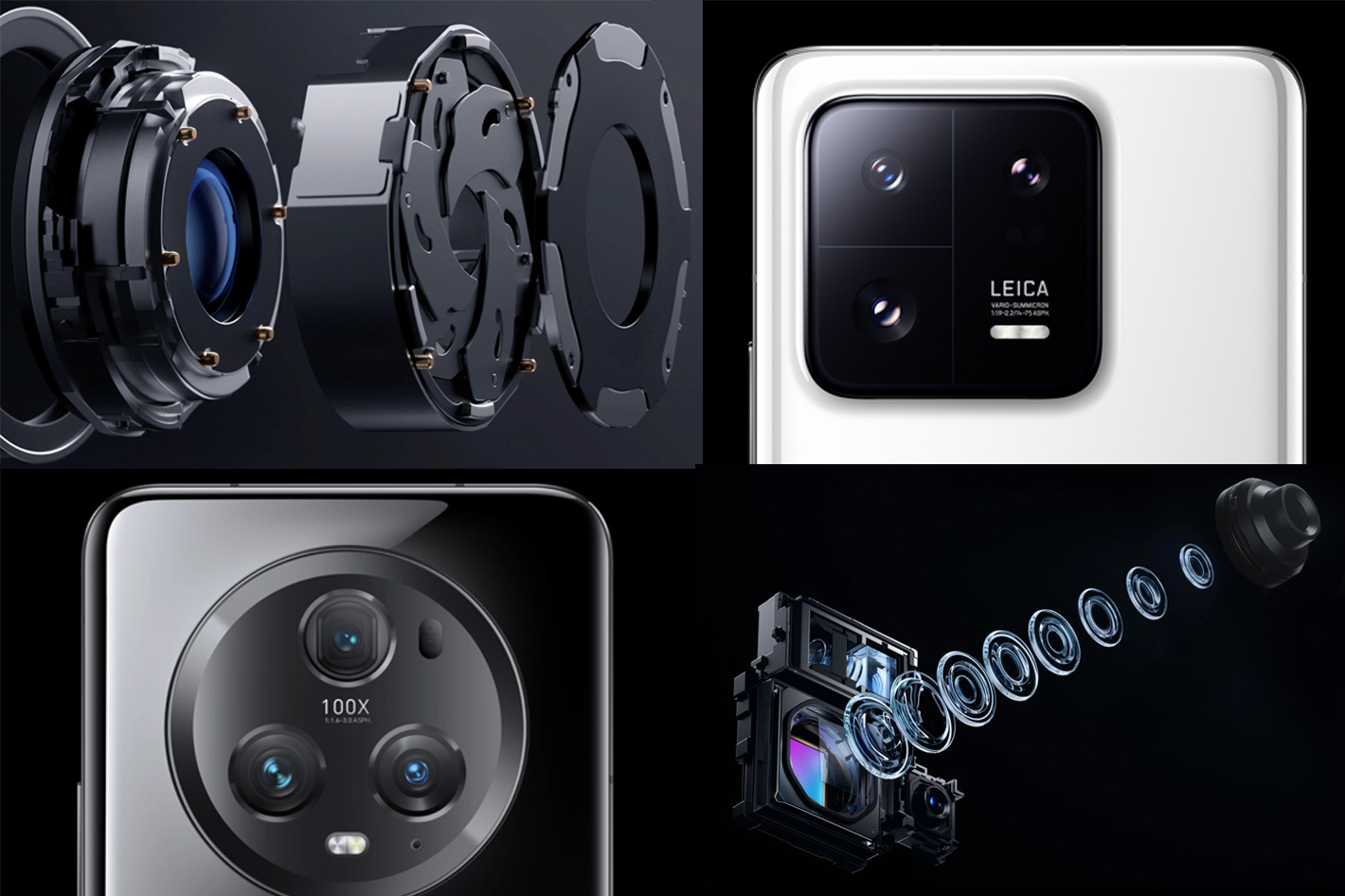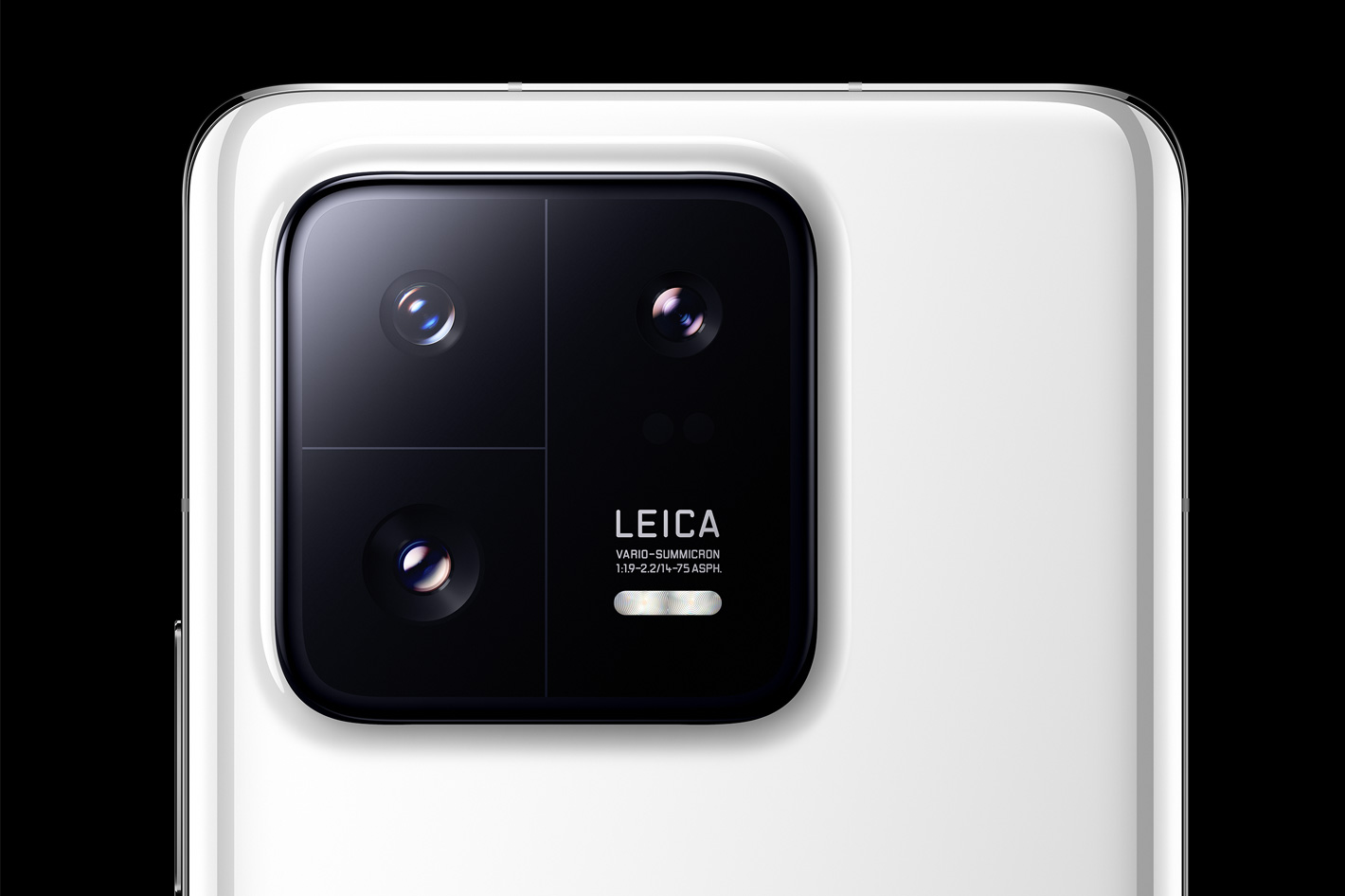
Smartphones have revolutionized the way filmmakers create content, allowing them to take high-quality videos, edit them on the go, and share them with the world without ever having to leave home. In 2023, filmmaking with smartphones will be even more accessible and sophisticated and more new signs of that trend were revealed, at the end of February, during the Mobile World Congress, in Barcelona, where rival smartphone companies tried to convince the public that their devices were the best not just as smartphones, but also as cameras.
The premium smartphones from most companies are, right now, able cameras as well, if you’re willing to pay the price. One example is the Xiaomi 13 Pro, introduced as the smartphone with real Leica cameras inside, which has a price starting at a little over $1200. The Xiaomi 13 Pro comes with a triple camera system that covers focal lengths from 14mm to 75mm and consists of a 23mm wide-angle main camera with an ultra-large 1-inch IMX989 sensor, a 75mm telephoto camera, as well as a 14mm ultra-wide angle camera.
Leica and Xiaomi continue to use a new notation to refer to the camera system in these smartphones (already used in the Xiaomi 12S Ultra), making things a bit more confusing to decode. They mention a Leica Vario-Summicron 1.19-2.2/14-75 ASPH. camera system, which AFAICS suggests a 14-75 zoom lens when there is no zoom included, but prime lenses covering the focal lengths of 14, 23 and 75mm.
First seen on Xiaomi 12S Ultra (which was only sold in China), the IMX989 sensor is the largest sensor ever incorporated into a smartphone. With high dynamic range, superb light-capturing capabilities and fast responses, the large sensor ensures colorful images with distinct contrast and defined textures that reveal every fine detail. By adopting a DSLR-level internal focusing technology, the smartphone’s new 75mm telephoto lens utilizes, says Xiaomi, “a floating lens design to achieve a focal range from 10cm to infinity – perfect for framing stunning portraits and beautiful close-ups.”


Offering a wide range of detailed camera setting options to thrill both shutterbugs and professional photographers, the Xiaomi 13 Pro is powered by the leading Snapdragon 8 Gen 2 mobile platform, with enhanced graphics processing through a GPU performance and power efficiency improvement of 42% and 49% respectively compared to the previous generation, while CPU performance and power efficiency is improved by 37% and 47% respectively. This powerful performance guarantees ease and speed when handling tasks like computational photography.
The Xiaomi 13 Pro “co-engineered with Leica” uses the same two distinct photographic styles – Leica Authentic Look and Leica Vibrant Look – already present in the Xiaomi 12S Ultra. With an appealing and easy-to-use UI, according to Xiaomi, the smartphone has other fun features, including Leica Filters, Leica watermark, and the Leica classic shutter sound. In terms of number of pixels, the three sensors used, although different in size, all offer 50MP, which is a good trend the industry, or some of the companies in this market, seem to follow.
Xiaomi’s Imaging Engine is behind the Xiaomi 13 Pro’s computational photography capabilities: not only its photo-capturing speeds are enhanced, but also allowing the devices to automatically focus on certain subjects in motion with Xiaomi ProFocus, further elevating the overall camera experience. As expected, the Xiaomi 13 Pro allows for full manual control and supports 10-Bit RAW DNG Camera and Color Profiles created by Adobe, leaving professionals greater post-editing room on Adobe Photoshop and Adobe Lightroom.
Video is also something where this smartphone aims to satisfy users. The Xiaomi 12S Ultra was introduced as Android’s first device to support Dolby Vision HDR recording, and now Xiaomi says that the Xiaomi 13 Pro is an exceptional tool for pro-level videographers. Both devices allow users to “Create in Dolby Vision” with vivid colors, sharp contrast ratios and rich details, capture 4K Ultra Night Videos, and offer HyperOIS video stabilization for capturing in exceptional video quality, according to Xiaomi.
The Xiaomi 13 Pro may have been the star at MWC, but when it comes to DxO scores, the honors go to… Honor. The company introduced at the Barcelona event the HONOR Magic5 Pro, which is now the smartphone sitting on the top position at DxOMark’s global camera rankings. The smartphone was put through DxOMark’s rigorous smartphone camera test which measures performance across a number of key categories including Photo, Bokeh, Zoom, Video and Preview, and ended with a top score of 152.
“The HONOR Magic5 Pro is the new leader in our ranking. It also takes the No. 1 spot in the photo ranking, thanks to outstanding photo results across all light levels,” mentioned DxOMark in its review. “The Magic5 Pro shone particularly in our Friend and Family use case, using fast shutter speeds to freeze subjects in motion while capturing excellent detail and keeping noise levels low.”
While some may not care much about DxOMark’s scores, the HONOR Magic5 Pro specifications will certainly impress: packing a 50MP Wide Camera, a 50MP Ultra Wide Camera, and a 50MP Periscope Telephoto Camera (here again, the trend to a similar size sensor), the HONOR Magic 5 Pro delivers images with greater sharpness, better exposure, and richer dynamic range, says the company.
Powered by a Snapdragon 8 Gen 2, the HONOR Magic5 Pro has a main camera with a 50MP, 8P optical lens with a 1/1.12 inch sensor, featuring 2.8μm 4-in-1 equivalent pixel size, f/1.6 aperture and OIS. The ultra wide has a 50MP, 122 degrees ultra-wide FOV, f/2.0 and macro focus at 2.5cm, while the periscope telephoto lens is built around a 50MP sensor and offers 3.5x optical zoom and 100x digital zoom, with a f/3.0 aperture and OIS. The HONOR Magic5 Pro supports 4K (3840×2160) video recording.
Based on the DxOMarks’s camera tests, Honor does not shy away from comparing its smartphone with Samsung’s Galaxy S23 Ultra, saying that “ The camera of the HONOR Magic5 Pro provided very good results at the ultra-wide’s native focal length and when slightly zooming in. The image quality was great in all light conditions, especially in bright light and indoors. In the medium range tele focal length, by comparing with Samsung, the HONOR Magic5 Pro presents fine details and low noise, while Samsung Galaxy S23 Ultra loses more details in the picture performance.” These are some interesting revelations for those looking for the next smartphone to buy.
Samsung’s Galaxy S23 Ultra, which is very much a S22 Ultra with little new touches, will continue to be a reference in terms of smartphones with cameras, and is, without doubt, one of the best smartphones for both photographers and filmmakers. The reviews and information shared by ProVideo Coalition regarding the Samsung Galaxy S22 Ultra are, in so many ways, valid to the S23 Ultra – which we’ve not tried – so there is no need to tell much more about this new model, which offers similar cameras/lenses to the S22 Ultra – from 16 to 230, with prime focal lengths of 16, 24, 70 and 230mm – and a digital zoom that goes through the values in between and up to 100x according to Samsung… up to around 20x (the absolute limit using Expert RAW or the Pro mode in the Camera app, which should be a clear warning!), according to our tests and results that are closer to photography than painting…
Any list of smartphones for photographers and filmmakers may also include the Google Pixel 7 Pro, although it is not available in all markets, the Sony Xperia Pro, which is not the most affordable or exciting of them, despite its natural colors, and models like the vivo X90 Pro, with its 50MP primary camera with the Sony IMX 979 1″ sensor, a 50MP 2x telephoto and a 12MP ultrawide camera, with Zeiss lenses included.
Deserving a special mention, the Huawei Mate P50 Pro, which is not available in all markets and does not offer Google services, is the first smartphone to offer a camera lens with variable aperture, as ProVideo Coalition noted back in September 2022. This is not the “two apertures” choice introduced by Sony in the Xperia Pro-I, but an adjustable aperture, which is applied to the 50 MP Ultra Aperture Camera (F1.4~F4.0 aperture, OIS) which is the main camera of the HUAWEI Mate 50 Pro.
We’re not at the f/1.8 to f/22 level of adjustment, and the minor changes from f/1.4 to f/4.0 may be seen by some as not useful, but the fact that the company discovered a way to implement variable aperture on such a small system is a huge step forward for photography – and video, I believe – with smartphones. In Pro Mode you can adjust the aperture of what HUAWEI calls its Ultra Aperture XMAGE Camera system.
These are, now, the most interesting Android smartphones for those who want to use them as cameras. While they do not compete, in terms of quality, with conventional cameras, they offer in a compact and easily pocketable device all the tools for capturing both stills and video.

